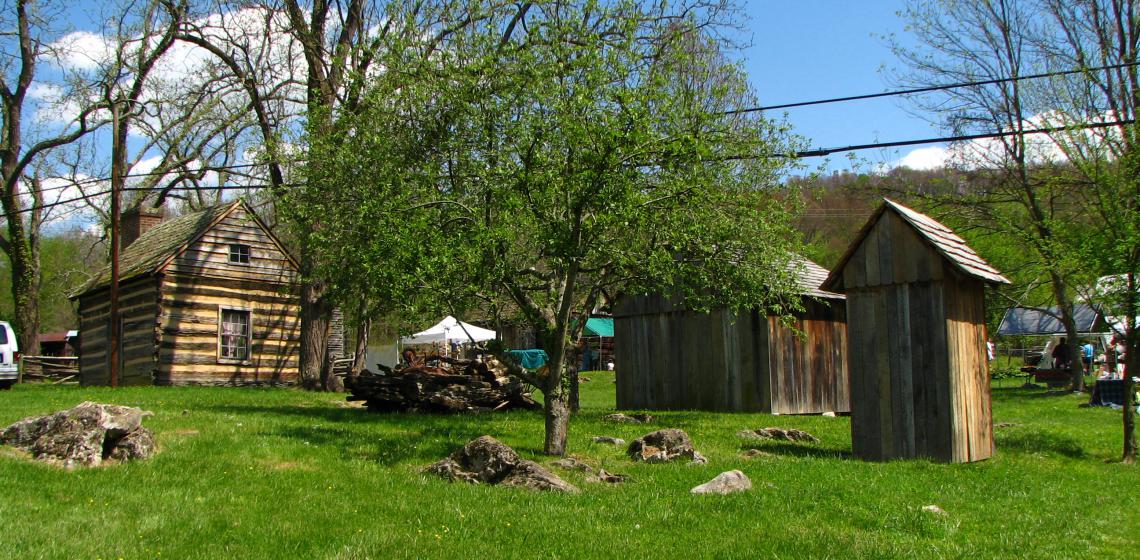
Exchange Place was once the center of a more than 2,000 acre plantation. It served as the stop for 19th century travellers along the Old Stage Road where Virginia currency was exchanged for Tennessee currency and tired horses were exchanged for fresh ones. "Exchanges" still take place today at the Exchange Place. Instead of exchanging currency, crafts made by local artisans may be purchased.
Exchange Place -- the Gaines-Preston Farm recaptures life in the early 1800s. Listed on the National Register of Historic Places, nine buildings built between 1816 and 1851 are restored on their original foundations, including the main house, the spring house, the school house and the smoke house.
As part of Exchange Place's commitment to preserve 19th century agricultural life, period livestock now reside on the farm. Domestic skills, including washing, spinning, weaving, ironing, quilting, candle dipping and basketry, are frequently demonstrated during festivals and by special arrangements.
Five buildings are reconstructed. The kitchen is a reconstruction built on the foundation of the original log kitchen, which was likely razed when the circa 1900 addition was made to the Main House. A singular feature of this building is that it is separate from the Main House. Often called “summer kitchens,” these structures are icons of the antebellum Southern landscape.
The Cook’s Cabin is a reconstruction on the original site of the log cabin that housed the plantation slave cook and her family in the antebellum period. When the Preston family donated Exchange Place to the Netherland Inn Association around 1970, the original Cook’s Cabin was in ruins. Archaeological evidence suggests that it was likely the oldest structure on the property, possibly dating to the late 18th century. Early 20th century photographs indicate the presence of a large chimney with an exterior fireplace, which was most likely used for outdoor cooking, laundering, and other chores requiring a fire. It has a dirt floor and is furnished sparingly and primitively. Several other structures like the Cook’s Cabin would have been on the farmstead to house slaves and tenants.
The forge is a recreation of the original blacksmith forge that stood about a half mile away. Early plantations often had their own forges where blacksmiths would make items that were used all over the farm.
This newly constructed shed is of post and beam construction and is held together exclusively with wooden pegs. It is convenient to the buildings that use the most wood in their fireplaces.
The privy, or outhouse, is a newly constructed example of an outdoor toilet. Privies were also often used as trashcans, and as such, they contain important archaeological evidence—broken pieces of china, sherds of glass and crockery, etc.—all bits of the material culture of the homestead.
Text source: exchangeplace.info, vacationaqt.com
